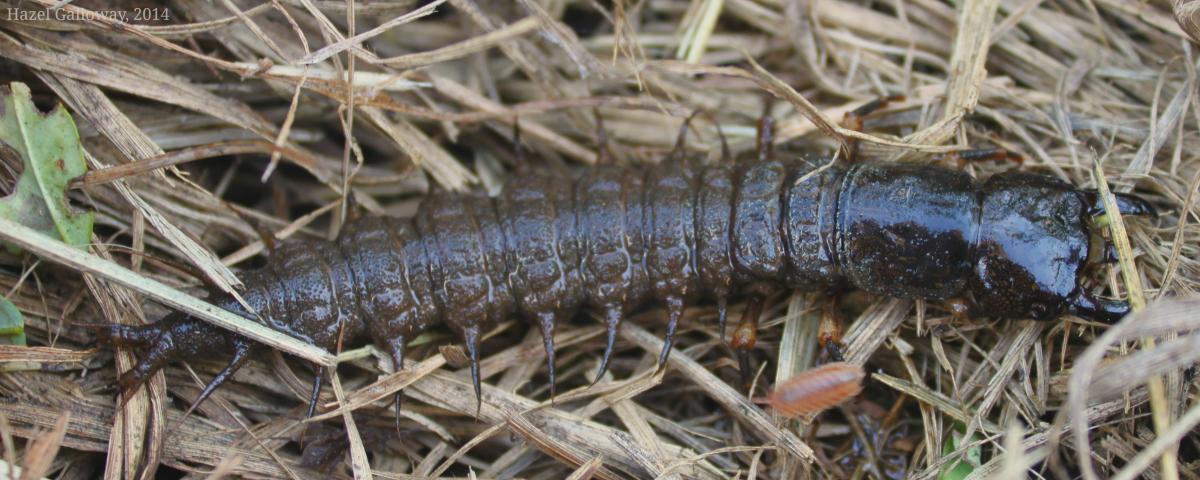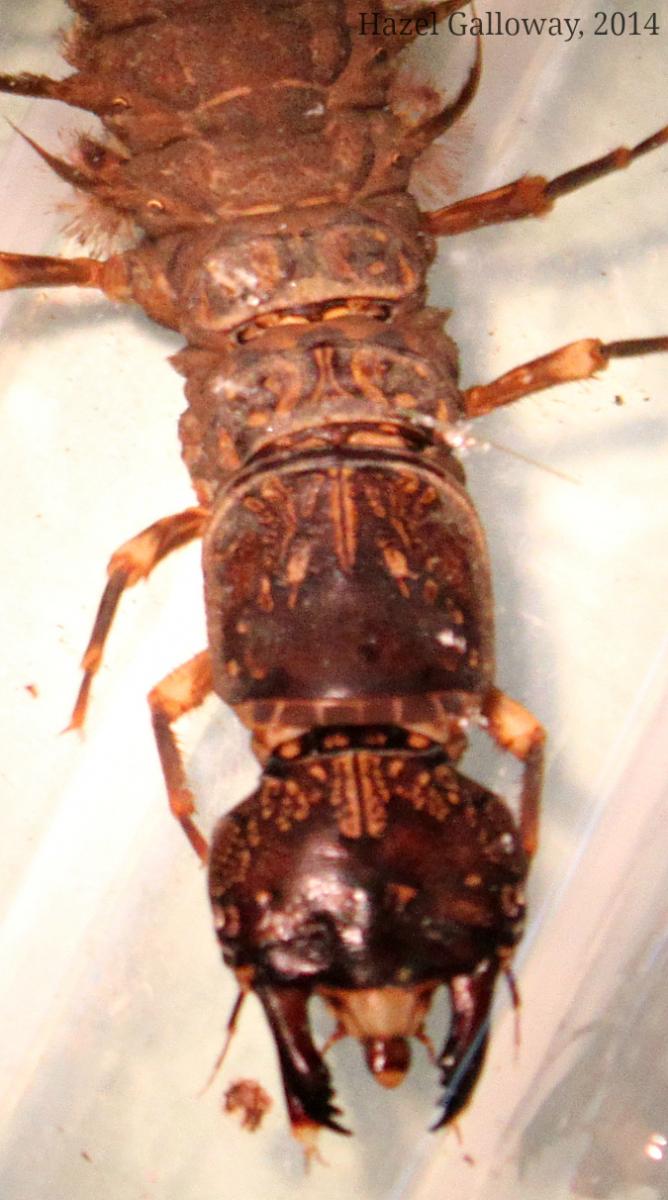 The first recorded use of the common name for these larvae appears in an 1866 edition of the Spirit of the Times, a New York weekly newspaper covering sports and culture. “There is another bait for bass called kill-devil—a sort of indescribable Barnum-what-is-it thing,” the author writes. “An old friend of mine denominated them hell gramites.” P. T. Barnum, the man referenced in the article, was noted for his public hoaxes including a false “mermaid” specimen constructed from the head of an ape stitched onto the body of a fish. One could be forgiven for suspecting unnatural origins in a creature so bizarre-looking, and yet this insect is a common inhabitant of streams in the eastern US from Canada to Mexico.
The first recorded use of the common name for these larvae appears in an 1866 edition of the Spirit of the Times, a New York weekly newspaper covering sports and culture. “There is another bait for bass called kill-devil—a sort of indescribable Barnum-what-is-it thing,” the author writes. “An old friend of mine denominated them hell gramites.” P. T. Barnum, the man referenced in the article, was noted for his public hoaxes including a false “mermaid” specimen constructed from the head of an ape stitched onto the body of a fish. One could be forgiven for suspecting unnatural origins in a creature so bizarre-looking, and yet this insect is a common inhabitant of streams in the eastern US from Canada to Mexico.
Adult female dobsonflies lay about 1000 tiny, grey, cylindrical eggs in layered clusters, typically on the undersides of leaves, branches, or other objects overhanging the stream. They brush over the egg mass with a clear fluid produced from the abdomen that turns white as it dries, causing the egg mass to roughly resemble a large bird dropping. Within 1-2 weeks, the new larvae hatch from their eggs at night and drop into the stream below, to be borne along until they encounter shelter to make their home (often the undersides of rocks and logs). The time period spent as larvae is highly temperature-dependent—populations in southern parts of their range can experience  complete life cycles in less than one year, while individuals dwelling in more northern climes often spend 2-3 years as larvae. The hellgrammites (sometimes called “toe-biters”) are top invertebrate predators in their ecosystems, preying on a wide variety of other soft-bodied insects and capable of inflicting a painful bite to humans with their large mandibles. They are recognizable by the pair of lateral tactile filaments projecting from each abdominal segment, which help protect them from predation. They have small tracheal gills, which, in addition to spiracles, allow the larvae to breathe both in and out of water. They can reach 9 cm in length.
complete life cycles in less than one year, while individuals dwelling in more northern climes often spend 2-3 years as larvae. The hellgrammites (sometimes called “toe-biters”) are top invertebrate predators in their ecosystems, preying on a wide variety of other soft-bodied insects and capable of inflicting a painful bite to humans with their large mandibles. They are recognizable by the pair of lateral tactile filaments projecting from each abdominal segment, which help protect them from predation. They have small tracheal gills, which, in addition to spiracles, allow the larvae to breathe both in and out of water. They can reach 9 cm in length.
When they are ready to pupate, the larvae travel up to 15 meters over land to find a suitably moist environment, often under logs or leaves. Virginia residents have reported synchronized emergences of hellgrammites (known locally as “hellgrammite crawlings”) that occur during thunderstorms; one field guide notes that “apparently, the vibration caused by the thunder acts as a triggering mechanism for mature larvae that are ready to pupate” (Voshell, 2002).
Upon finding a suitable spot for pupation, the larvae dig into the ground, creating hollowed-out chambers in the soil which they inhabit for 1-4 weeks. When they emerge, the males have around three days to live, while the females have eight to ten. The males use their massive mandibles (up to 4 cm in length) in contests with other males and as part of courtship rituals.
This larva was found on route 625 near the New River by Malcolm. Because it was found on land and is close to a mature size, it is likely ready to pupate.
Hazel Galloway
See photographs of adult specimens here, courtesy of Lyle J. Buss and the University of Florida.
Sources:
- Brady Richards (California Fish & Game's Aquatic Bioassessment Laboratory) for help with ID
- Voshell, J Reese. A Guide to Common Freshwater Invertebrates of North America. McDonald & Woodward Pub., 2002.
- http://www.oed.com/view/Entry/85672?redirectedFrom=hellgrammite#eid
- http://entnemdept.ufl.edu/creatures/misc/eastern_dobsonfly.htm
- http://www.biokids.umich.edu/critters/Corydalus_cornutus/
- http://www.museumofhoaxes.com/hoax/archive/display/category/p.t._barnum



